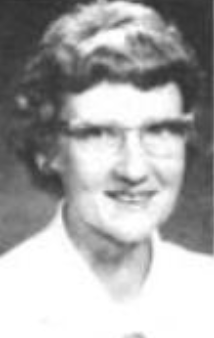J. Virginia Lincoln facts for kids
Jeannette Virginia Lincoln (born September 7, 1915 – died August 1, 2003) was an American physicist. She was a scientist who studied how radio waves travel and how the sun affects them.
Virginia Lincoln was born in Ames, Iowa. Her father was a general in the US Army Air Forces. Her mother was a chemistry professor. Virginia went to Wellesley College and earned a degree in physics. She also got a master's degree from Iowa State University.
She started working for the government in 1942. She joined the National Bureau of Standards (NBS). This was in Washington, D.C.. Later, she moved with her lab to Boulder, Colorado.
Virginia Lincoln became a leader in her field. She was the only woman from the US at a big science meeting in Moscow in 1959. She also helped create a way to predict sunspots. This method is still used today. She retired in 1980.
Early Life and Education
Jeannette Virginia Lincoln was born on September 7, 1915. Her hometown was Ames, Iowa. Her family had a strong connection to the military. Her father, Rush B. Lincoln, was a Major General in the US Army Air Forces.
Her mother, Jeannette Bartholomew Lincoln, was a chemistry professor. She taught at Iowa State University. Virginia's brother, Rush B. Lincoln Jr., also became a Major General. Their grandfather fought in the Civil War.
Virginia Lincoln studied at Dana Hall School in Wellesley, Massachusetts. She then went to Wellesley College. In 1936, she earned her bachelor's degree in physics there. She continued her studies at Iowa State University. In 1938, she received her master's degree.
While studying, she also taught. From 1936 to 1942, she was an instructor at Iowa State. She taught about household equipment. This meant showing people how to use new electronics and devices.
A Career in Science
In 1942, Virginia Lincoln began her career as a physicist. She joined the US National Bureau of Standards (NBS). She worked in Washington, D.C. Her first job was in the Interservice Radio Propagation Laboratory (IRPL). There, she studied the ionosphere. This is a part of Earth's upper atmosphere.
In 1946, a new lab was formed. It was called the Central Radio Propagation Laboratory (CRPL). Its goal was to gather information and research. It also made predictions about radio propagation. This is how radio waves travel. These predictions looked at how the sun and Earth's geology affected radio signals.
In 1954, the CRPL moved to Boulder, Colorado. Virginia Lincoln moved with it. Her first role there was a radio weather forecaster. She made maps that predicted ionospheric conditions each month. These maps helped people choose the best radio frequencies. This was important for long-distance radio communication.
In 1949, Lincoln helped create an important method. It was a statistical way to predict sunspot activity. This method is still used today to forecast solar storms.
Leading the Way
Virginia Lincoln was a trailblazer. In 1958, she attended a big meeting in Moscow. It was for the International Geophysical Year. She was the only woman in the official US group of fifty scientists. She noticed that the Russian group had several women scientists.
In 1959, she became the Deputy Chief of Radio Warning Services. This was part of the Central Radio Propagation Laboratory. Her work helped the US government and other groups manage radio waves. She made sure new technologies were used well. Virginia Lincoln was the first woman to lead a section in a federal bureau.
Her special skill was forecasting solar events. These events could affect radio communications technology. She worked as the director for the World Data Center for Solar-Terrestrial Physics. She also led the Solar-Terrestrial Physics division for NOAA.
Virginia Lincoln worked at the Data Center from 1966 until 1980. That was the year she retired from federal service. After retiring, she stayed active. She got involved with the Boulder Historical Museum. She also traveled a lot and enjoyed playing golf.
Virginia Lincoln received important awards for her work. In 1973, she earned the Department of Commerce Gold Medal. This was for her excellent service. In 2000, she was honored again. She was inducted into the Colorado Women's Hall of Fame.
She passed away in Boulder, Colorado, on August 1, 2003. She was 87 years old.


